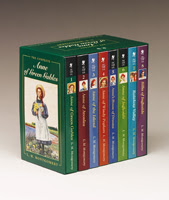
L.M. Montgomery and Gender was published in November 2021 by McGill-Queen’s University Press. This book of scholarship examines how
L.M. Montgomery challenged gender constructions and gender roles in her writing. It was edited by Laura M. Robinson and E. Holly Pike. The volume contains contributions by Kazuko Sakuma, Lesley D. Clement, Ashley N. Reese, Bonnie J. Tulloch, Mavis Reimer, Rebecca J. Thompson, E. Holly Pike, Wanda Campbell, Vappu Kannas, Catherine Clark, Carole Gerson, Christina Hitchcock, Kiera Ball, Heather Ladd, Erin Spring, Jane Urquhart, Tara K. Parmiter, and Elizabeth Rollins Epperly.
Here is the description of the volume from McGill-Queen’s University Press:
The celebrated author of Anne of Green Gables and Emily of New Moon receives much-deserved additional consideration in L.M. Montgomery and Gender. Nineteen contributors take a variety of critical and theoretical positions, from historical analyses of the White Feather campaign and discussions of adoption to medical discourses of death and disease, explorations of Montgomery’s use of humour, and the author’s rewriting of masculinist traditions.
The essays span Montgomery’s writing, exploring her famous Anne and Emily books as well as her short fiction, her comic journal composed with her friend Nora Lefurgey, and less-studied novels such as Magic for Marigold and The Blue Castle. Dividing the chapters into five sections - on masculinities and femininities, domestic space, humour, intertexts, and being in time - L.M. Montgomery and Gender addresses the degree to which Montgomery’s work engages and exposes, reflects and challenges the gender roles around her, underscoring how her writing has shaped future representations of gender.
Of interest to historians, feminists, gender scholars, scholars of literature, and Montgomery enthusiasts, this wide-ranging collection builds on the depth of current scholarship in its approach to the complexity of gender in the works of one of Canada’s best-loved authors.
Review
"A book-length study on this author's rich and complex relationship with gender norms and expectations, and her myriad depictions of gender, is overdue. Because modern understanding of gender identity and contemporary awareness of gender issues are increasingly prominent in cultural discussions, this book, with its many perspectives on gender in Montgomery's work, is extraordinarily timely." Caroline Jones, Austin Community College
The book includes the following content and essays:
INTRODUCTION
“You Don’t Want Me Because I’m Not a Boy”: L.M. Montgomery and Gender by E. Holly Pike and Laura M. Robinson
MASCULINITIES AND FEMININITIES
1. The White Feather: Gender and War in L.M. Montgomery’s Rilla of Ingleside by Kazuko Sakuma
2. From “Uncanny Beauty” to “Uncanny Disease”: Destabilizing Gender through the Deaths of Ruby Gillis and Walter Blythe and the Life of Anne Shirley by Lesley D. Clement
3. Barney of the Island: Nature and Gender in Montgomery’s The Blue Castle by Ashley N. Reese
DOMESTIC SPACE
4. The Robinsonade versus the Annescapade: Exploring the “Adventure” in Anne of Green Gables by Bonnie J. Tulloch
5. Soliciting Home: The Cultural Function of Orphans in Early Twentieth-Century Canada by Mavis Reimer
6. “That House Belongs to Me”: The Appropriation of Patriarchal Space in L.M. Montgomery’s Emily Trilogy by Rebecca J. Thompson
HUMOUR
7. Cross-Dressing: Twins, Language, and Gender in L.M. Montgomery’s Short Fiction by E. Holly Pike
8. “I’m Noted for That”: Comic Subversion and Gender in L.M. Montgomery’s “The Quarantine at Alexander Abraham’s” and “Aunt Philippa and the Men” by Wanda Campbell
9. “Nora and I Got Through the Evening”: Gender Roles and Romance in the Diary of L.M. Montgomery and Nora Lefurgey by Vappu Kannas
INTERTEXTS
10. The Blue Castle: Sex and the Revisionist Fairy Tale by Catherine Clark
11. L.M. Montgomery, E. Pauline Johnson, and the Figure of the “Half-Breed Girl” by Carole Gerson
12. Orgies of Lovemaking: L.M. Montgomery’s Feminine Version of the Augustinian Community by Christina Hitchcock and Kiera Ball
13. Feminizing Thomson’s The Seasons: Identity, Gender, and Seasonal Aesthetics in L.M. Montgomery’s Anne of Green Gables by Heather Ladd and Erin Spring
BEING IN TIME
14. Her Reader by Jane Urquhart
15. Like a Childless Mother: L.M. Montgomery and the Anguish of Mother’s Loss by Tara K. Parmiter
16. Magic for Marigold: Engendering Questions about What Lasts by Elizabeth Rollins Epperly
Image credit:
Book cover of
L.M. Montgomery and Gender from McGill-Queen’s University Press.
Purchase and read L.M. Montgomery and Gender:

Created November 25, 2021. Last
updated June 11, 2024.
©
worldofanneshirley.com





















